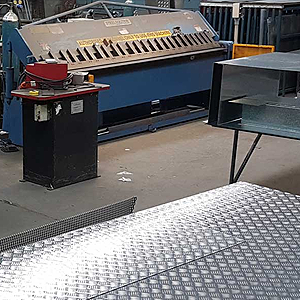Segmented processing strategies are inherently unstable. Perhaps unstable is the wrong term. It’s just that, logistically speaking, there’s always going to be a labour constraint or a time management issue to deal with when several shops get in on the fabrication act. Generally, an at-odds workflow lacks a systemic, production-oriented mode of operation. What’s really required here is an in-house solution, a processing backbone that keeps every element of the product realization strategy under one roof.
In-House Fabrication Benefits
The ability to assume full control of a project’s fabrication timeline is ranked first in our study, for it’s a major plus, one that sits prominently at the top of our benefits list. Next, the machining of carbon steel, aluminium, and stainless steel suggests a likely outsourcing point, but all of these alloys have predictable mechanical characteristics, so they can all be rolled into the same workshop, well, as long as some tooling modifications are made. From here, the tooling stations govern every stage of the engineering work, including the guillotining, folding, and bending. Finally, the graded alloys leave the machine shop and head for the assembly floor. It’s here that welding and fastening technicians work diligently to satisfy our work practices. Frankly, in catering to every segment of this diverse fabrication run, an industrious in-house company is providing a quality-assured service that fabricates and assembles structurally-capable parts, the expertly machined beams and plates that are in demand in every industrial sector.
Accounting for Material Differences
Not all alloys are created equal. Cold worked metals incorporate unique characteristics while heat treated and tempered alloys balance hardness against ductility. The selected metal is mechanically unique, plus it has a unique heat dissipation profile. What does heat transmission have to do with anything? Well, welds form differently when the heat is absorbed into the metal’s microcrystalline structure, so this feature has to be incorporated into the material selection process. Again, an in-house shop caters for this conceptualizing stage by sourcing the right material for the right application.
An in-house steel and aluminium fabricator can govern all of these stages. There’s no outsourcing, no need to compromise a timeline while a broken communication’s channel corrupts processing efficiency. Instead, material selection is taken care of by the same management team that’s working on the end parts. Final plans and structural requirements mix with unified welding and fastening measures in this synchronized environment, with the resulting parts leaving the machining setting only when the consolidated workflow has produced a product or products that meet the client’s specifications.
